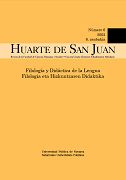Hizkuntzaren ikaskuntzaren inguruko teoriak eta didaktika
Abstract
This paper is a brief overview of the most relevant methodological currents relative to learning and acquisition in general and, in more specific terms, to the theories that have placed special emphasis on the learning and acquisition of languages. After examining each of the theories, I analyse the relationship and influence they have had on learning and on language didactics of both mother tongue (L1) and second language (L2). Considering that each of these theories reflect a particular approach to acquisition and teaching and learning of a language, I follow on to assess the impact of these on the school or to put it differently, I analyse to which extend these theories provide effective proposals for mainstream teaching and learning in schools.
Downloads
References
ALVAREZ, A., DEL RÍO, P. (1993): Educación y desarrollo: la teoría de Vygotsky y la zona de desarrollo próximo. In COLL, C., PALACIOS, H., MARCHESI, A. (Comp.): Desarrollo psicológico y educación II, Psicología de la educación, Alianza, Madrid, 93- 119.
BAYÉS et al. (1980): ¿Chomsky o Skinner? La génesis del lenguaje, Fontanella, Barcelona.
BRONCKART, J. P. (1980): Teorías del lenguaje. Herder, Barcelona.
BRUNER, J. (1986): El habla del niño, Paidós, Barcelona.
BRUNER, J. (1984 ): Los formatos y la adquisición del lenguaje. In J. L. LINAZA (Comp.): Acción, pensamiento y lenguaje, Alianza Psicología, Madrid.
CHOMSKY, N. (1965): Aspects of the Theory of Sintax, M IT Press. Gaztelaniazko itzulpena: Aspectos de la teoría de la sintaxis, Aguilar, Madrid, 19784.
CHOMSKY, N. (1980): El lenguaje y el entendimiento, Seix Barral, Barcelona.
CHOMSKY, N. (1981): Reflexiones acerca del lenguaje, Trillas, México.
CHOMSKY, N. (1983): Hizkuntzalaritza eta giza gogoaren natura, Jakin, no 29.
FRANCESCATO, G. (1986): El lenguaje infantil. Estructura y aprendizaje, Ed. Nexos-Península, Barcelona.
FERREIRO, E. (1991 [1990]): El desarrollo de la alfabetización: psicogénesis. In Y. M.
GOODMAN (Comp.): Los niños construyen su lectoescritura. Un enfoque piagetiano, Aiqué Didáctica, Argentina, 21-35.
KOZULIN, A. (1994 [1990]): La psicología de Vygotski, Alianza, Madrid.
KRASHEN, S. D. (1985): The Input hypothesis, issues and implications, Longman, London, New York.
LENNEBERG, E. (1985 [1957]): Fundamentos biológicos del lenguaje, Alianza, Madrid.
LENNEBERG, E./LENNEBERG, E. (1982): Fundamentos del desarrollo del lenguaje, Alianza, Madrid.
LÓPEZ ORNAT, S. (1994): La adquisición de la lengua española, Siglo XXI, Madrid.
PIAGET, J. (1976 [1923]): El lenguaje y el pensamiento en el niño. Estudio sobre la lógica del niño (1), Guadalupe, Buenos Aires.
PIAGET, J. (1979 [1949]): La formación del símbolo en el niño, Fondo de Cultura Económica, México.
PIAGET, J./INHELDER, B. (1984 [1966]): Psicología del niño, Ed. Morara, Madrid.
RICHELLE, M. (1981): Skinner o el peligro behaviorista, Herder, Barcelona.
RICHELLE, M. (1984): La adquisición del lenguaje, Herder, Barcelona.
RIVIERE, A. (1985): La psicología de Vygotski, Visor-Infacia y Aprendizaje, Madrid.
SALABURU, P. (1985): Hizkuntza eta linguistika. Fontes Linguae Vasconum, 45, 5-23.
SKINNER, B. F. (1981 [1957]): Conducta verbal, Trillas, México.
SNOW, C., FERGUSON C. (1977): Talking to children. Language input and acquisition, Cambridge University Press, New York.
VYGOTSKY, L.S. (1981 [1934]): Pensamiento y lenguaje, La pléyade, Buenos Aires.
WERTSCH, J. (1991): Vygotski y la formación social de la mente, Barcelona, Paidós.
ZUBIRI, J, J. (1995): Euskarazko haur hizkuntzaren ezaugarriak, Huarte de San Juan, 66 Lingüística y literatura, UPNA, 1: 1 75-203.
Downloads
Published
How to Cite
Issue
Section
License
All articles are published under a Creative Commons (BY-NC-ND 4.0) license. Each article will be assigned a DOI.
Authors retain copyright of their work and grant the journal the right to the first publication. Authors can sign additional agreements to non-exclusive distribution of the published version of the article (for example, in an institutional repository) as long as appropriate attribution to the original publication is provided. Articles can be uploaded to institutional repositories immediately after publication.
Electronic distribution of the articles (for example, academic social networks or personal webpages) is allowed and encouraged.
The journal reserves the right to publicise the work in social networks and other electronic means.







